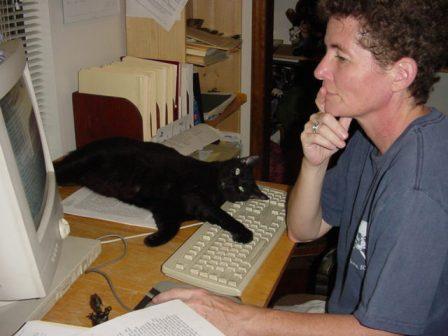Successfully Nurturing Herb Plants
We’ve received such positive feedback from other articles written about herbs, and referring to the information in Herbal Rhythms: Deciphering Herbal Codes that we felt compelled to continue sharing with others.
Happy Herb Usage!
Euroswydd, Reiki Clown, and Mort
Herbal, organic, sustainable, back to nature, and nontoxic are but a few of the positive catch phrases commonly used when referring to a kinder, healthier lifestyle. Having—perhaps whilst dining out--enticed taste buds with new sensations of flavor not based on fats and salts many have purchased herbs and cookbooks with the intent of manifesting those flavor sensations at home. Unfortunately in our age of disassociation with process most are disappointed when the herbs don’t magically flourish wherever they’re put once arriving in their new home.
Such necessities as the proper amount of sunlight, water, soil conditions, soil and other amenities, temperatures, freezing of seeds or not at some point during the living cycle, likelihood of wind damage, animal intervention and other factors must be factored into the equation when considering successful herb plant cultivation. Casual placement whether in the ground or pot can easily result in disappointment whereas knowledge of the microclimates, targets of automatic sprinklers, exposure to sun etc. can make the difference between an easy harvest and none at all.
While most herbs don’t require the ministrations that high maintenance plants such as roses do, herbs prefer a close approximation of the conditions inherent to their native lands. This can be arrived at by various means and once the proper growth regiment is met can be repeated year after year with predictable success.
By way of example, those plants grown for the sake of their roots need a loose, detritus—natural rock formations, unnatural leftovers from construction—free area to stretch and grow in to their optimal harvest potential. Those coming from the Mediterranean regions prefer drier, coarser soil.
Anyone who has gardened is aware of delineation of the country’s climates into Zones. Knowledge of these and their placement help facilitate decisions about what to plant, where and when. Set up on the principle of averages they’re quite useful but don’t fully take into account altitude, desiccation/humidity levels, intensity of the sun, propensity for wind damage, micro-climes within the yard and other unique local factors. Familiarity with these is crucial when planning and executing a garden whether herb or otherwise.
Other influences to keep in mind might include cats--whether neighborhood or personal. I’ve found there to be a marked difference of opinion over the best intended use of a freshly turned area of the garden. I see it as a place for seeds or seedlings; they see it as an area in need of their ministrations and worthy of deposits of various sorts. A piece of screening over the top discourages further soil rearranging by feline or other volunteers and provides a resilient, light protection for new seedlings. It also keeps birds from nibbling on quite so many of the seeds before they germinate. Again a difference of perceptions springs to the avian and human mind when seeds are sown. They see dinner while I enjoy visions of leafy vegetation erupting within 7 to 10 days.
Once the foundational habits and desires of a particular herb are known the next step is to incorporate those into the specific geographical growing situation. Some will grow easily while others may require a bit of experimentation. Having all the necessary information easily accessible within a reference guide such as “Herbal Rhythms: Deciphering Herbal Codes” goes a long way towards facilitating a healthy, enjoyable harvest.
Most books cover many herbs and only provide brief informational snippets about each. Providing a well rounded picture of fourteen of the most widely used herbs this book discusses historical, medicinal, culinary, cultivation practices, as well as offering recipe suggestions and projects to clarify various processes and have fun. The fourteen herbs discussed include basil, coriander/cilantro, dill, ginger, lavender, lemon balm, licorice, mint, oregano, parsley, sage, rosemary, tarragon, and thyme.
 Available At:
Available At:

